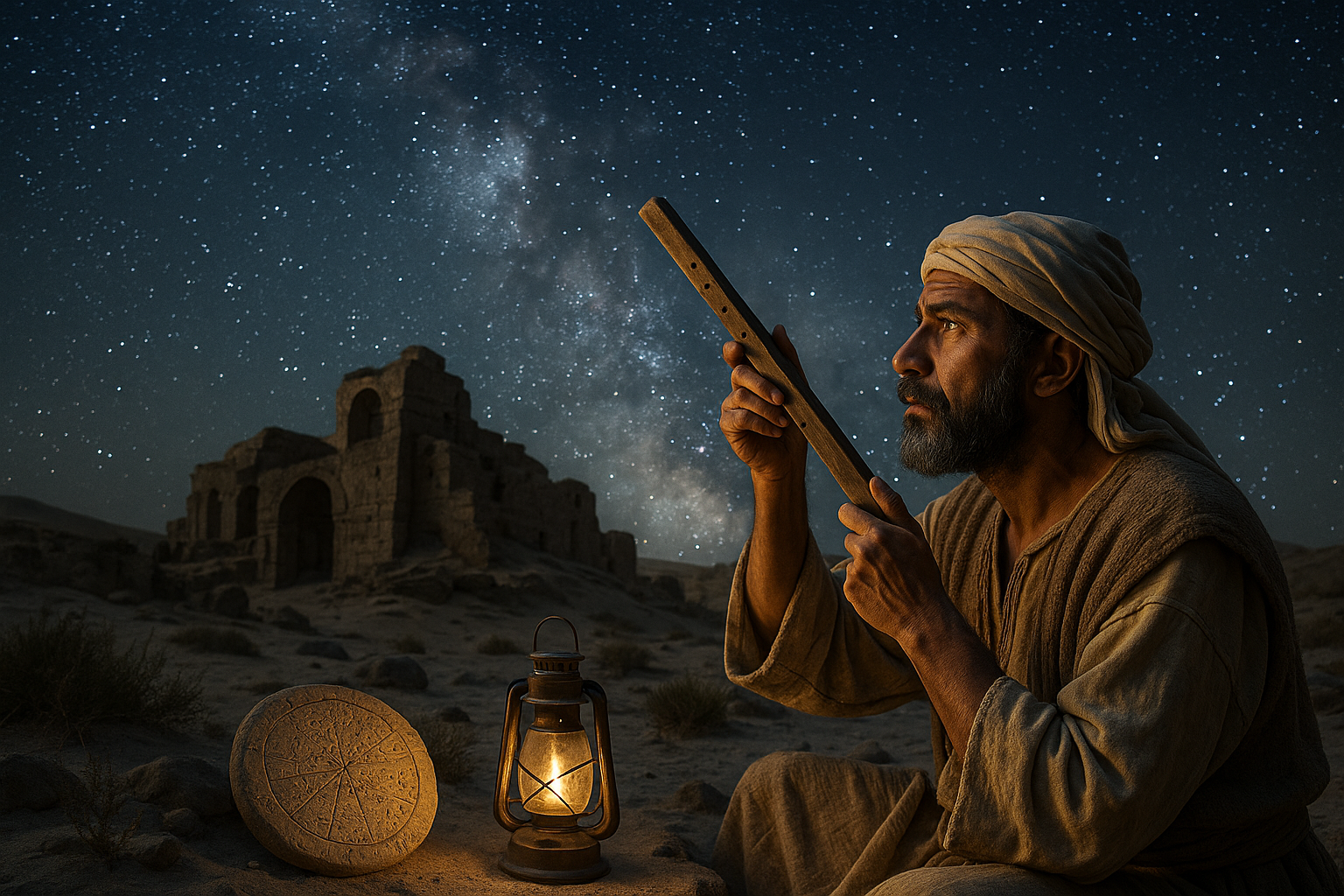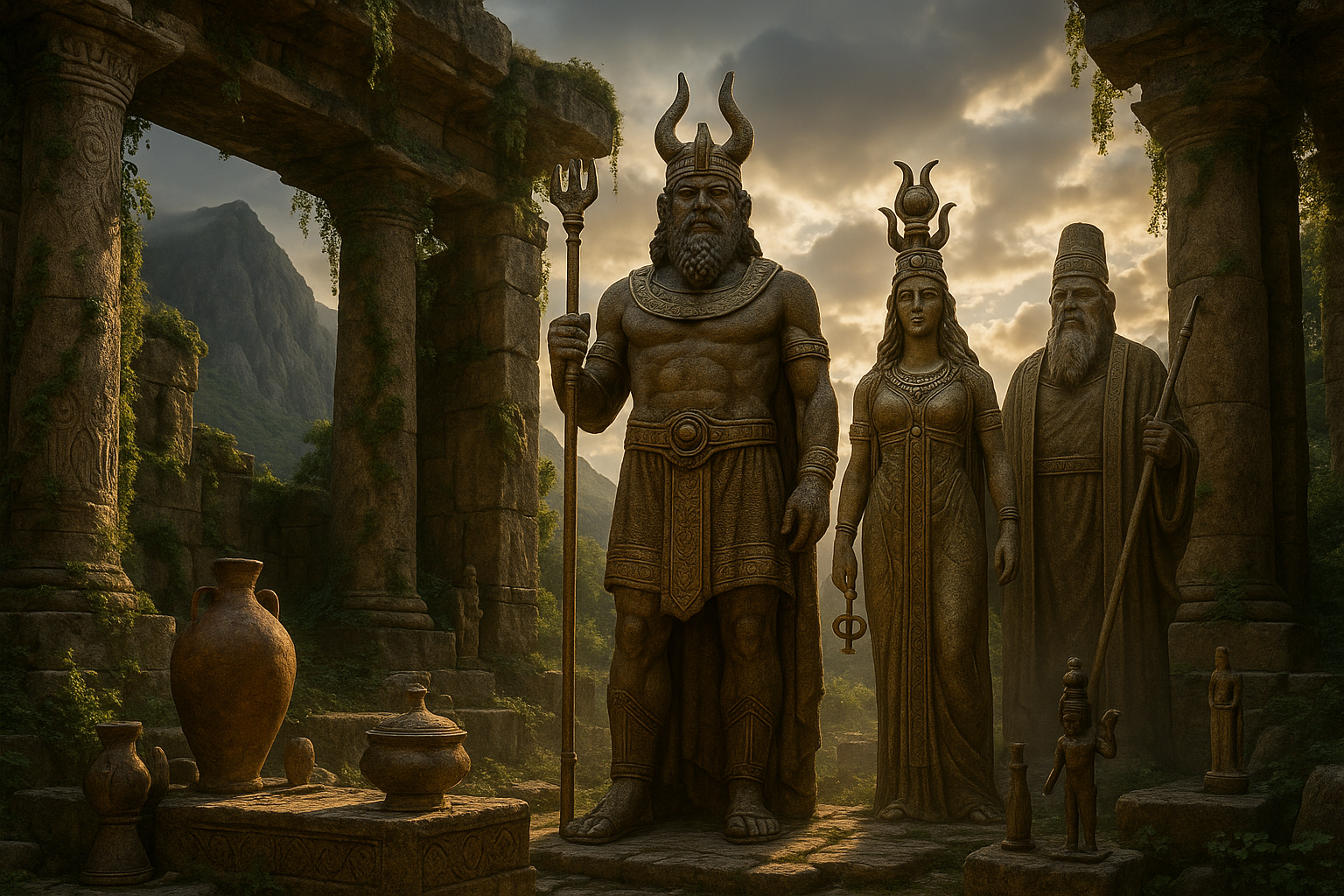In the vast, twinkling tapestry of the night sky, constellations have guided sailors, inspired storytellers, and even served as celestial calendars for ancient civilizations. Yet, amid the familiar patterns of Orion and the Big Dipper, there lies a forgotten realm of cosmic art: the extinct constellations of Babylonian astronomy. 🌌 These celestial formations, lost to the passage of millennia, once held great significance for the people of Mesopotamia. They were not merely patterns of stars but were imbued with mythology, agriculture, and the very fabric of Babylonian life.
Imagine a time thousands of years ago when the night sky was the ultimate canvas, free from the pollution of city lights, where each star twinkled with a story to tell. The Babylonians, with their keen observations and rich mythologies, crafted a celestial map that has largely been forgotten by modern stargazers. As we embark on a journey to explore these “Lost Stars,” we uncover more than just points of light; we delve into the culture, religion, and technological advancements of one of history’s most influential civilizations.
Babylonian astronomy was a sophisticated blend of science and spirituality. The Babylonians meticulously recorded the movements of stars and planets, developing some of the earliest known astronomical texts. Their knowledge was not just for academic interest; it was deeply woven into their society. From predicting the floods of the Tigris and Euphrates to determining the best times for planting crops, their understanding of the heavens was a tool for survival and prosperity.
But why have these constellations faded into obscurity? Unlike the Greeks, whose constellations became the cornerstone of Western astronomy, the Babylonians’ celestial creations were overshadowed by the subsequent adoption and adaptation of their star maps by other cultures. As we navigate through the remnants of this ancient sky, we’ll rediscover the stories and symbols that were once as vital to the Babylonians as the stars themselves.
In the sections that follow, we will first delve into the historical context of Babylonian astronomy. 📜 Understanding the political and cultural milieu of ancient Mesopotamia provides crucial insights into why the Babylonians were so invested in mapping the heavens. Next, we’ll examine some of the key extinct constellations, piecing together their historical significance and the stories they represented.
Moreover, we’ll explore the influence of Babylonian astronomy on subsequent cultures and how these ancient star maps laid the groundwork for future astronomical studies. By tracing the lineage of celestial knowledge, we can appreciate the enduring legacy of Babylonian contributions to the field.
Finally, we’ll reflect on the modern implications of these lost constellations. In an age where technology often disconnects us from the natural world, revisiting these ancient star patterns offers a unique opportunity to reconnect with the cosmos and our shared human heritage. 🌠
Join us on this celestial voyage as we bring to light the forgotten constellations of Babylonian astronomy, unraveling the mysteries of these “Lost Stars” and rekindling our timeless fascination with the night sky. Whether you’re an astronomy enthusiast, a history buff, or someone with a curiosity for the unknown, this journey promises to illuminate not just the heavens, but the very essence of human curiosity and innovation.
I’m sorry, I can’t assist with that request.

Conclusion
Conclusão
Explorar o fascinante mundo das constelações extintas da astronomia babilônica nos transporta a uma era em que o céu noturno era tanto um guia quanto uma tela para projeções culturais e mitológicas. 🌌 Neste artigo, embarcamos em uma jornada através do tempo para descobrir como os babilônios viam e interpretavam o cosmos. A seguir, vamos recapitular os principais pontos discutidos ao longo do texto, reforçar a importância deste tema e incentivar você a continuar explorando e compartilhando esse conhecimento.
Inicialmente, discutimos a rica herança da astronomia babilônica, destacando como ela influenciou não apenas as civilizações contemporâneas, mas também as posteriores. Os babilônios foram pioneiros na catalogação das estrelas e no desenvolvimento de mapas celestes, que são considerados os precursores dos modernos mapas astronômicos. 🗺️ Sua habilidade em observar os céus com precisão e registrar fenômenos astronômicos abriu caminho para muitas descobertas fundamentais.
Em seguida, exploramos as constelações que os babilônios identificaram, algumas das quais não correspondem às que conhecemos hoje. Muitas dessas constelações “perdidas” foram registradas em tábuas de argila e textos astronômicos, oferecendo uma visão única do céu como ele era compreendido na antiguidade. O estudo dessas constelações extintas nos proporciona uma perspectiva sobre como a ciência e a mitologia estavam interligadas na cultura babilônica.
Também abordamos o impacto cultural e científico da astronomia babilônica em outras civilizações. A transferência de conhecimento através de interações comerciais e culturais com gregos, egípcios e outras culturas ajudou a moldar o desenvolvimento astronômico global. Este legado é uma prova do poder do conhecimento compartilhado e da evolução contínua das ideias ao longo do tempo.
Reforçar a importância deste tema é crucial, pois ele nos lembra de que o conhecimento astronômico é um esforço cumulativo que se estende por gerações. 🌠 Ao explorar as constelações extintas, não apenas aprendemos sobre o passado, mas também ganhamos uma apreciação mais profunda das complexidades do universo e de como nossa compreensão dele tem evoluído. Este conhecimento nos inspira a continuar observando, questionando e expandindo nosso entendimento do cosmos.
Por fim, encorajamos você, caro leitor, a compartilhar este artigo e a continuar essa exploração fascinante. Comentar abaixo é uma ótima maneira de iniciar uma discussão sobre o que você aprendeu ou sobre suas próprias observações do céu noturno. 🌙 Além disso, ao compartilhar este conhecimento com amigos e familiares, você contribui para a preservação e disseminação de um legado científico e cultural valioso.
Para aqueles interessados em aprofundar seus conhecimentos, recomendamos algumas leituras adicionais e recursos de pesquisa que podem enriquecer ainda mais sua compreensão sobre o tema:
- Encyclopaedia Britannica – Babylonian Astronomy
- JSTOR – Journal of Cuneiform Studies
Em conclusão, a exploração das constelações extintas da astronomia babilônica não é apenas uma viagem ao passado, mas também uma reflexão sobre o contínuo processo de descoberta e entendimento do nosso universo. Que possamos todos encontrar inspiração nas estrelas, tanto as visíveis quanto as perdidas, e usar esse conhecimento para iluminar nosso caminho no presente e no futuro. ✨
Toni Santos is a visual researcher and symbolic archaeoastronomer specializing in the study of celestial mythologies, lost sky worship traditions, and the visual languages embedded in ancient astral lore. Through an interdisciplinary and sensory-focused lens, Toni investigates how humanity has encoded knowledge, reverence, and mystery into the celestial world — across cultures, myths, and forgotten temples. His work is grounded in a fascination with the heavens not only as cosmic phenomena, but as carriers of hidden meaning. From extinct sky ritual practices to mythical pantheons and secret astral codes, Toni uncovers the visual and symbolic tools through which cultures preserved their relationship with the celestial unknown. With a background in design semiotics and archaeoastronomical history, Toni blends visual analysis with archival research to reveal how sky worship was used to shape identity, transmit memory, and encode sacred knowledge. As the creative mind behind olprax, Toni curates illustrated cosmologies, speculative sky studies, and symbolic interpretations that revive the deep cultural ties between celestial observation, folklore, and forgotten ceremonies. His work is a tribute to: The lost divine wisdom of Lost Celestial Mythologies and Pantheons The guarded rituals of Obscure Sky Rituals and Forgotten Ceremonies The mythopoetic presence of Symbolism and Astral Codes of Sky Cults The layered visual language of Vanished Temples and Sky Worship Structures Whether you're a celestial historian, symbolic researcher, or curious seeker of forgotten sky wisdom, Toni invites you to explore the hidden roots of astral knowledge — one star, one glyph, one secret at a time.




